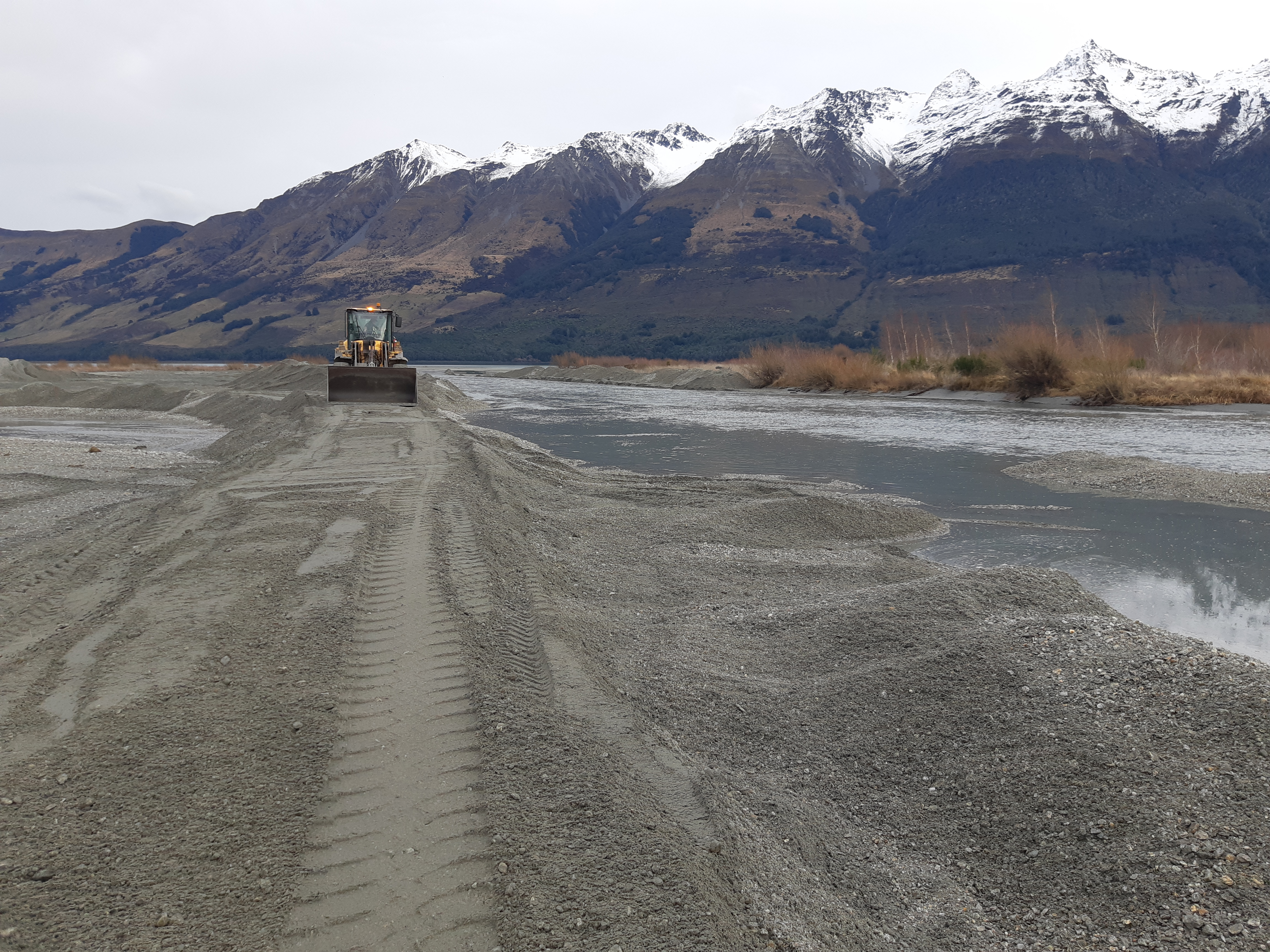Co-Chair of ORC’s Implementation Committee Cr Bryan Scott said progress was being made on a number of fronts.
“There are a few different pieces of work around Glenorchy that we’re progressing, including vegetation clearance and channel realignment to improve drainage from Lagoon Creek and the Rees River, as well as an assessment of erosion on the Glenorchy floodbank, and an application to install a water level monitor in the Glenorchy Lagoon.
“Staff are also investigating possible sites for a new flow gauging station on the Rees River, and the Emergency Management Otago team is developing a flood emergency evacuation plan with the help of a new staff member.”
Some of these works, like the vegetation clearance, are short term measures that will need to be revisited, while staff will monitor the performance of the realigned Rees River channel—particularly during moderate to high flows—and make adjustments if required.
Cr Scott said the ORC had been in communication with the Glenorchy community about the improvements.
“I also understand that staff have committed to providing monthly updates on ORC’s current flood resilience work to the Glenorchy Community Association, and those updates have been well received.”
ORC is developing, in collaboration with the Queenstown Lakes District Council and other communities and stakeholders, a long-term natural hazards adaptation strategy for the wider area at the northern end of Lake Wakatipu, including Glenorchy. Many of the proposed short-term initiatives will assist preparation of the long-term strategy.
This work acknowledges that natural hazards issues in the area must be considered in a strategic and holistic way that accounts for future climate change, multiple and cascading natural hazards and pressure for land-use intensification.

A loader on the Rees Delta works on aligning the Rees River channel towards the western side of the delta.
